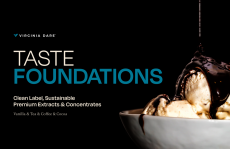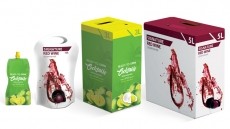TIC targets bakers with gum system for icings
to prevent common problems in icings and glazes on baked goods.
TIC Pretested Stabilizer Icing, which is being formally introduced worldwide after a period of sampling, claims to allow bakeries to create icings and glazes that are effective, consistent and pleasing to the palate.
"The development of our Stabilizer Icing reflects the fact that today's food manufacturers, including bakeries, are looking for real solutions to specific challenges," said Maureen Akins, food scientist for TIC Gums.
According to Akins, the gum system solves common defects in bakery icings and glazes and also prevents problems from occurring in the first place.
A stable glaze or filling depends on several factors, such as the pH of a solution, the available water content, the amount of solids, and the processing conditions of the product.
Some common problems that can occur if any of those factors are out of balance include cracking on the surface, boil-out of the filling, or emulsion separation, TIC Gums explained.
The addition of certain gums to bakery fillings and glazes can help prevent or minimize these issues.
Gum solutions can assist in moisture retention and manage water activity in a formulation.
This allows for good freeze-thaw stability and prevents surface cracking. TIC Gums' Stabilizer Icing was initially developed for cream cheese icings that are used on pastries like cinnamon rolls to prevent the icing from developing defects when kept under a heat lamp.
The stabilizer reduced melting, cracking, sugar crystallization, and kept the oil in the icing from coming out.
Stabilizer Icing is a general purpose icing stabilizer that also prevents icings and glazes from sticking to the packaging of the pastry, the firm told FoodNavigator-USA.com.
Comprised of a blend of hydrocolloids, Stabilizer Icing imparts properties key to stable icings and glazes, such as emulsification, aeration and water binding.
The cold water soluble powder, which works by emulsifying fat in the icing, and stabilizing foam-like textures, also claims to be effective in preventing sugar 'blooms' that can occur in products like cream cheese icing, German Chocolate icing and ganache glaze, said the firm.
Usage levels for the product range from 1.25 to 1.50 percent.













